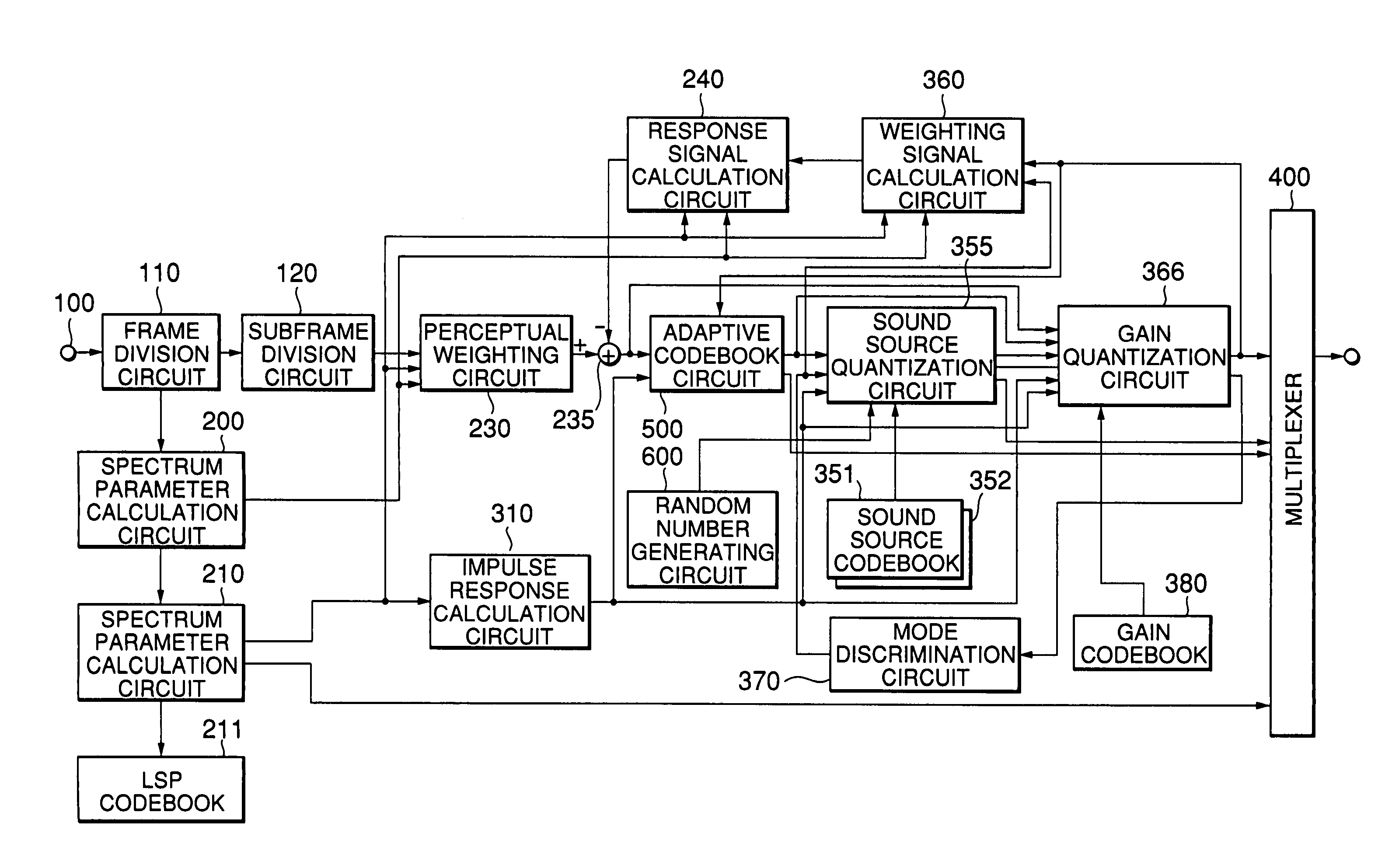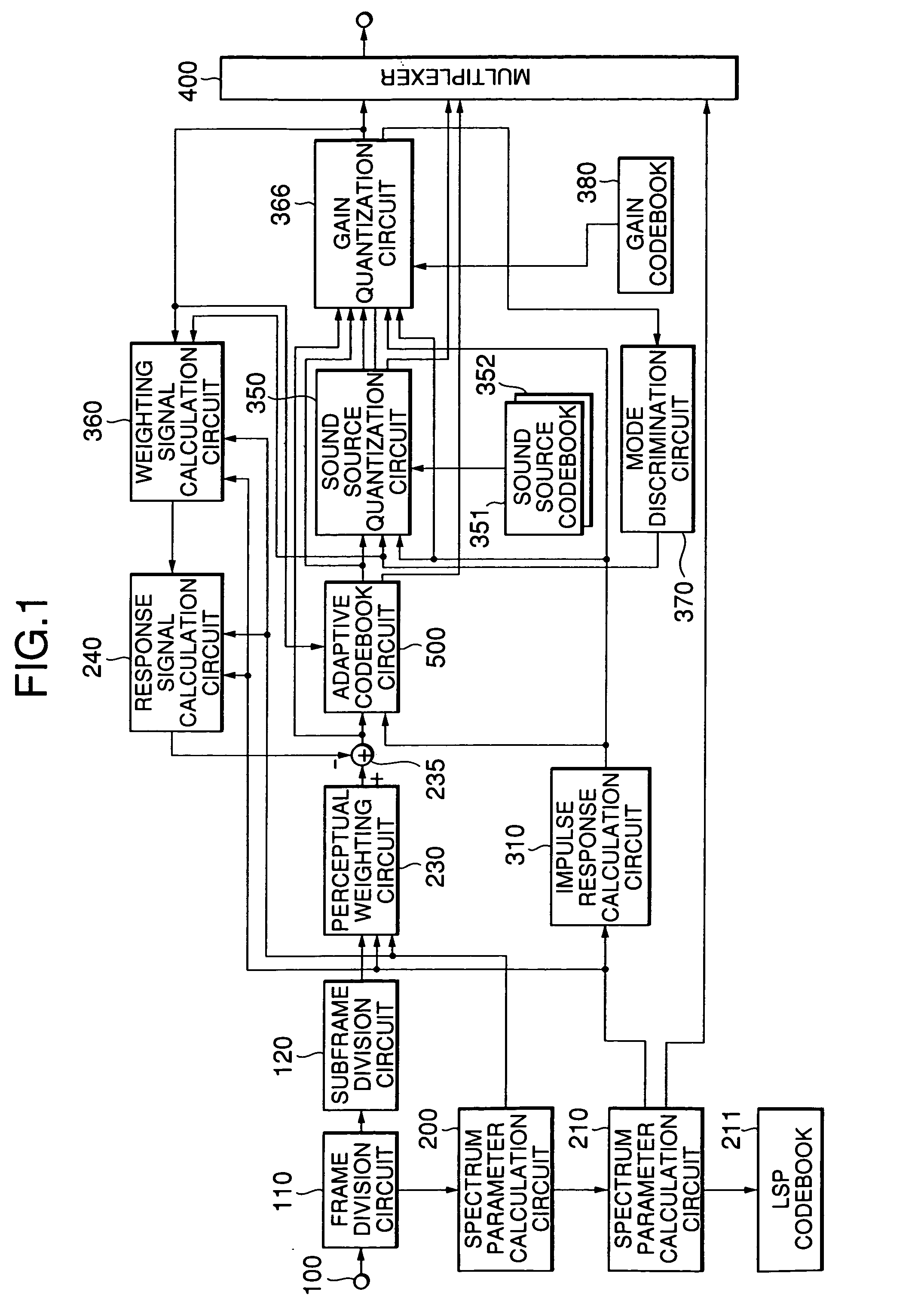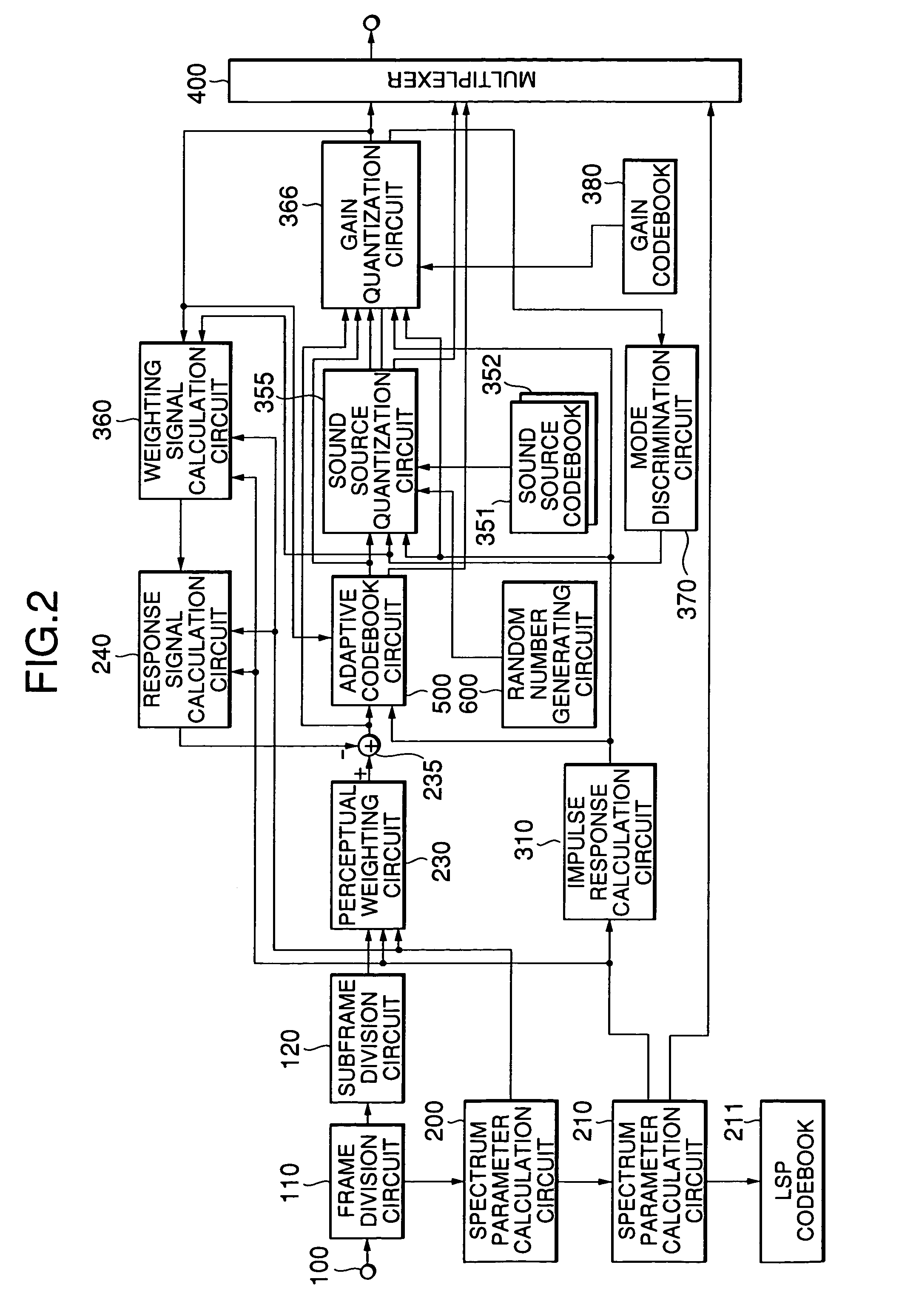Speech coding apparatus and speech decoding apparatus
a speech coding and speech technology, applied in the field of speech coding apparatus and speech decoding apparatus, can solve the problems of large calculation amount, large calculation amount, and disadvantageous conventional coding schemes, and achieve the effect of small calculation amount and suppression of deterioration in sound quality
- Summary
- Abstract
- Description
- Claims
- Application Information
AI Technical Summary
Benefits of technology
Problems solved by technology
Method used
Image
Examples
first embodiment
[0034]FIG. 1 is a block diagram showing the arrangement of a speech coding apparatus according to an embodiment of the present invention.
[0035]Referring to FIG. 1, when a speech signal is input through an input terminal 100, a frame division circuit 110 divides the speech signal into frames (for example, of 20 ms). A subframe division circuit 120 divides the speech signal of each frame into subframes (for example, of 5 ms) shorter than the frames.
[0036]A spectrum parameter calculation circuit 200 extracts speech from the speech signal of at least one subframe using a window (for example, of 24 ms) longer than the subframe length and calculates spectrum parameters by computations of a predetermined order (for example, P=10). In this case, for the calculation of spectrum parameters, an LPC analysis, a Burg analysis, and the like which are well known in the art can be used. In this case, the Burg analysis is used. Since the Burg analysis is disclosed in detail in Nakamizo, “Signal Anal...
second embodiment
[0078]FIG. 2 is a block diagram showing the schematic arrangement of the second embodiment of the present invention.
[0079]Referring to FIG. 2, the second embodiment of the present invention differs from the above embodiment in the operation of a sound source quantization circuit 355. More specifically, when voiced / unvoiced discrimination information indicates an unvoiced sound, the positions that are generated in advance in accordance with a predetermined rule are used as pulse positions.
[0080]For example, a random number generating circuit 600 is used to generate a predetermined number of (e.g., M1) pulse positions. That is, the M1 values generated by the random number generating circuit 600 are used as pulse positions. The M1 positions generated in this manner are output to the sound source quantization circuit 355.
[0081]If the discrimination information indicates a voiced sound, the sound source quantization circuit 355 operates in the same manner as the sound source quantization...
third embodiment
[0082]FIG. 3 is a block diagram showing the arrangement of the third embodiment of the present invention.
[0083]Referring to FIG. 3, in the third embodiment of the present invention, when voiced / unvoiced discrimination information indicates an unvoiced sound, a sound source quantization circuit 356 calculates the distortions given by equations (21) below in correspondence with all the combinations of all the code vectors in a sound source codebook 352 and the shift amounts of pulse positions, selects a plurality of combinations in the order which minimizes the distortions given by: Dk,j=∑n=0N-1[ew(n)-∑i=1Mgik′hw(n-mi-δ(j))]2(21)
and outputs them to a gain quantization circuit 366.
[0084]The gain quantization circuit 366 quantizes gains for a plurality of sets of outputs from the sound source quantization circuit 356 by using a gain codebook 380, and selects a combination of a shift amount, sound source code vector, and gain code vector which minimizes distortions given by: ...
PUM
 Login to View More
Login to View More Abstract
Description
Claims
Application Information
 Login to View More
Login to View More - R&D
- Intellectual Property
- Life Sciences
- Materials
- Tech Scout
- Unparalleled Data Quality
- Higher Quality Content
- 60% Fewer Hallucinations
Browse by: Latest US Patents, China's latest patents, Technical Efficacy Thesaurus, Application Domain, Technology Topic, Popular Technical Reports.
© 2025 PatSnap. All rights reserved.Legal|Privacy policy|Modern Slavery Act Transparency Statement|Sitemap|About US| Contact US: help@patsnap.com



